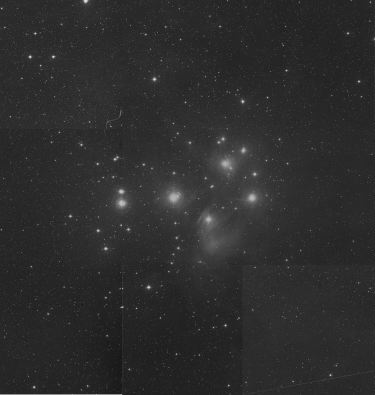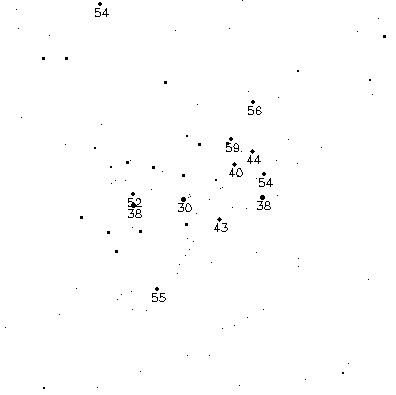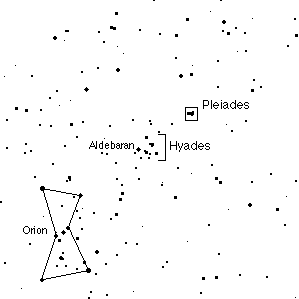
 | |||
|
|
| ||
The Pleiades, an open
cluster in Taurus,
M45
Comments Telescopic photos show
a reflection nebula visible as a cloud surrounding each of the bright stars, but
these are not visible through ordinary binoculars under typical conditions.
Data



A map of the star field. Magnitudes are given without
a decimal point, e.g. 67 is to be interpreted as magnitude 6.7.

How to Find It
Start from Orion's upper right shoulder, move diagonally up and to the right
through the bright star Aldebaran, and continue on about an equal distance to the
Pleiades. The cluster is easily visible with the naked eye, even under poor conditions,
so you can find it by eye and then point the binoculars at it.
Dazzling enough from the city, this brightest of all open clusters
will knock your socks off from a dark-sky area. It even looks pretty around sunset
when the sky is still blue! Counting fifteen stars or so is like
falling off a log -- under good conditions
at least thirty are visible. This is one of the few cases where the view through binoculars
is as good as the photos you find in books.
RA=03 47, dec=+24 07
integrated magnitude=1.2
60-degree field of view
(c) Copyright 1998 Benjamin Crowell. All right reserved.
Photos from the Digitized Sky Survey, stdatu.stsci.edu/dss/dss_form.html
Sky maps created by Your Sky, www.fourmilab.com